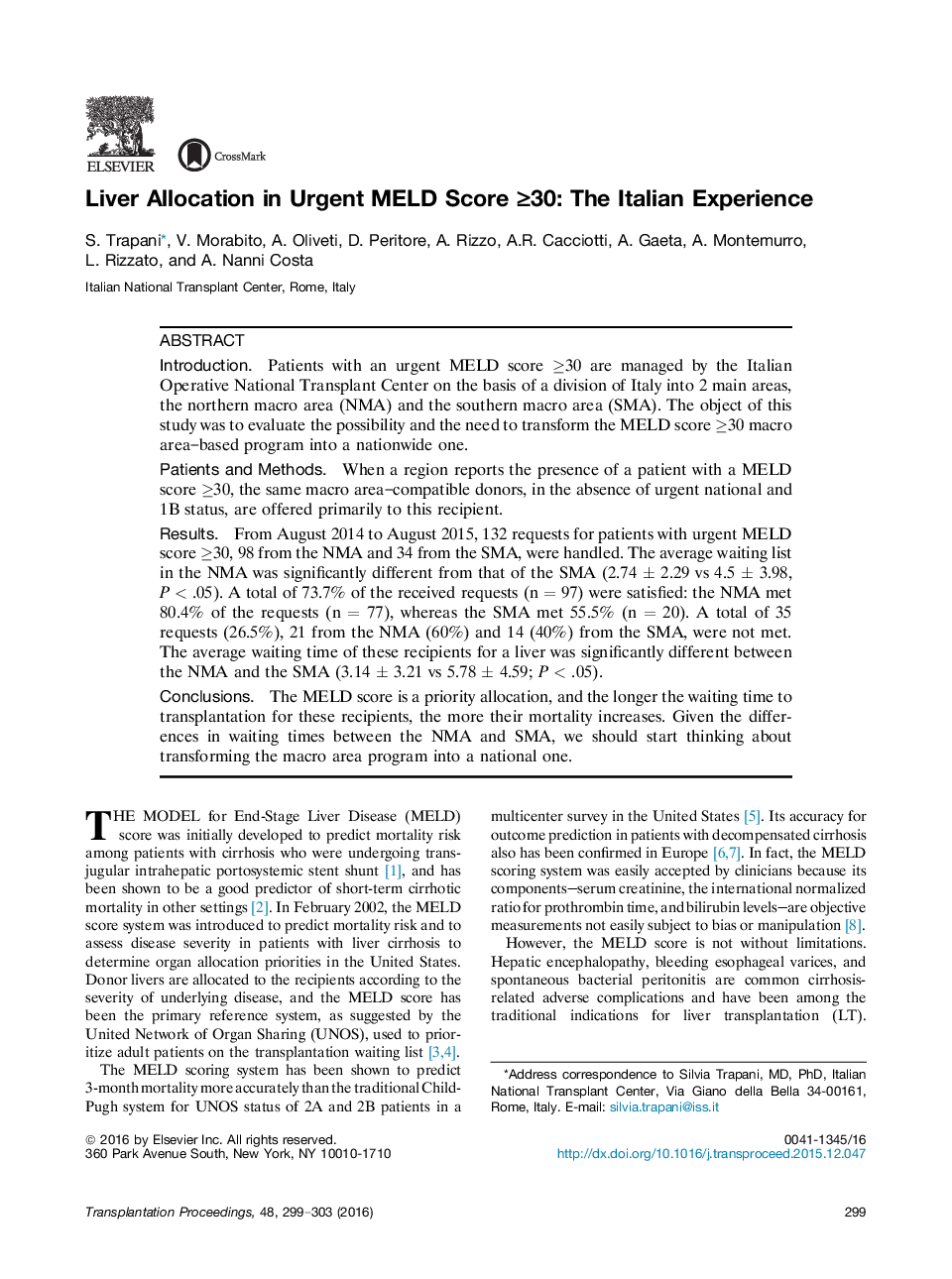| Article ID | Journal | Published Year | Pages | File Type |
|---|---|---|---|---|
| 6246873 | Transplantation Proceedings | 2016 | 5 Pages |
â¢The MELD scoring system has been shown to predict 3-month mortality and to have a prognostic ability in predicting mortality on the waiting list as well as the need for removal from the waiting list due to deterioration of the overall clinical condition.â¢In Italy, where the organ transplantation network is coordinated by the National Transplantation Center, there is a macro area program known as the urgent MELD that gives an allocation priority to recipients on the liver waiting list.â¢The arbitrary cutoff at 30 was chosen because patients with MELD score >30 at transplantation represent the highest decile (10%) of patients undergoing transplantation in Italy in the previous year (2014).â¢This study evaluated the results of the first year of the application of this allocation system, and the collected data show that recipients in the south macro area enrolled in this program have a disadvantage in terms of waiting time and available donors.â¢On such grounds, it would be proper to consider changing the current macro area program into a national program.
IntroductionPatients with an urgent MELD score â¥30 are managed by the Italian Operative National Transplant Center on the basis of a division of Italy into 2 main areas, the northern macro area (NMA) and the southern macro area (SMA). The object of this study was to evaluate the possibility and the need to transform the MELD score â¥30 macro area-based program into a nationwide one.Patients and MethodsWhen a region reports the presence of a patient with a MELD score â¥30, the same macro area-compatible donors, in the absence of urgent national and 1B status, are offered primarily to this recipient.ResultsFrom August 2014 to August 2015, 132 requests for patients with urgent MELD score â¥30, 98 from the NMA and 34 from the SMA, were handled. The average waiting list in the NMA was significantly different from that of the SMA (2.74 ± 2.29 vs 4.5 ± 3.98, P < .05). A total of 73.7% of the received requests (n = 97) were satisfied: the NMA met 80.4% of the requests (n = 77), whereas the SMA met 55.5% (n = 20). A total of 35 requests (26.5%), 21 from the NMA (60%) and 14 (40%) from the SMA, were not met. The average waiting time of these recipients for a liver was significantly different between the NMA and the SMA (3.14 ± 3.21 vs 5.78 ± 4.59; P < .05).ConclusionsThe MELD score is a priority allocation, and the longer the waiting time to transplantation for these recipients, the more their mortality increases. Given the differences in waiting times between the NMA and SMA, we should start thinking about transforming the macro area program into a national one.
